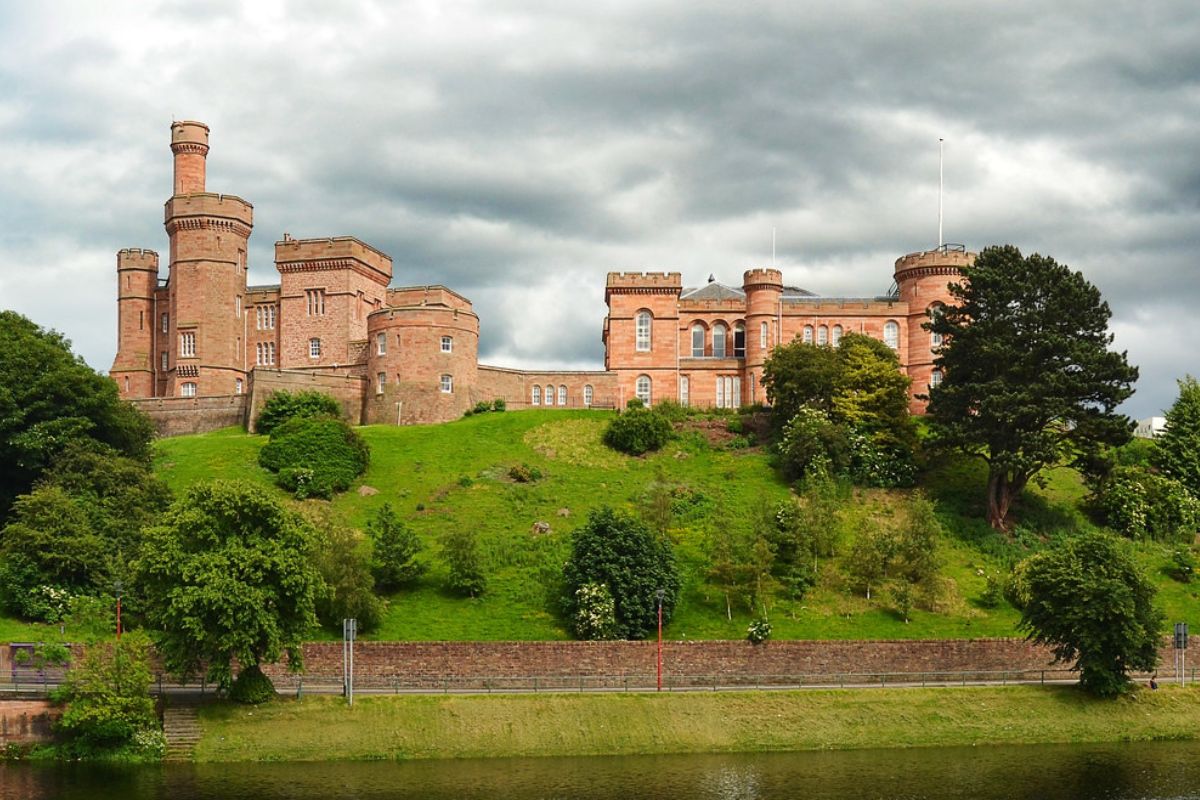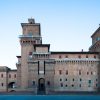Inverness Castle
Inverness Castle stands as a commanding symbol of the Scottish Highlands. Overlooking the River Ness, it serves as a cultural and historical beacon in northern Scotland. Though the current structure dates back to the 19th century, the site has hosted fortifications since the 11th century.
This location has seen kings, battles, rebellions, and royal visitors. Its long history mirrors the turbulent evolution of Highland society. Built in striking red sandstone, the castle reflects the elegance of 1800s architecture while resting on ancient roots. Its prominence in both legend and history makes it a key part of Scottish heritage.
Location of Inverness Castle
Inverness Castle sits in the centre of Inverness, perched dramatically above the River Ness. It occupies a raised cliff with sweeping views of the water and surrounding city. This location places it at the heart of the Highland capital, making it easy to reach for visitors.
The castle is near several notable landmarks, including Inverness Cathedral and the Victorian Market. The peaceful Ness Islands, a popular walking route, are just a short stroll away. Inverness itself is a gateway to the Highlands, located near Loch Ness, the Cairngorms, and the historic Culloden Battlefield.
Travel connections are strong. Visitors can reach Inverness by train, coach, or road. The nearby airport offers flights to several UK and European destinations. The castle’s location makes it an ideal first stop when exploring the Highlands. From there, the region opens up with lochs, glens, and castles waiting to be explored.

History of Inverness Castle
The earliest known fortification on this site dates back to 1057. King Malcolm III reportedly built a royal castle after destroying Macbeth’s stronghold nearby. That early wooden fort would give way to various stone structures over the centuries, each reflecting the era’s power struggles.
During the reign of David I in the 12th century, Inverness grew in strategic importance. The castle became a centre of royal authority in the north. However, it was not always under stable control. In the 1300s, Robert the Bruce captured and destroyed the castle during the Wars of Scottish Independence.
In the 15th century, James I summoned Highland clan leaders to Inverness Castle. Several were arrested and executed after a display of royal power meant to subdue rebellious territories. This period also saw the Frasers and Munros rise in influence, often clashing with rival clans.
In 1562, Mary, Queen of Scots arrived at Inverness but was denied entry. The castle governor, loyal to the Earl of Huntly, refused her access. Local clans, including the Frasers and Munros, quickly supported Mary. They laid siege to the castle and overpowered the garrison. The governor was executed, and the event solidified the queen’s ties to the Highlands.
During the Jacobite risings of the 17th and 18th centuries, the castle again saw conflict. In 1746, just before the Battle of Culloden, government forces blew up parts of the castle to prevent its use by Jacobite rebels. The ruins stood until the 1800s, when a new era of civic building began.
The present Inverness Castle was constructed in 1836. Designed by architect William Burn, it served as a courthouse and administrative centre. While no longer a royal residence, it became a civic landmark and has shaped the modern identity of Inverness.

Current Status
Today, Inverness Castle is undergoing a major transformation. For many years, the building functioned as a courthouse and local government centre. In recent times, the courts have moved, and the site is being redeveloped into a visitor attraction.
The project aims to reopen the castle as a key tourism and cultural hub. Restoration work includes preserving the historic fabric while introducing new exhibitions, galleries, and public spaces. When complete, visitors will enjoy panoramic views from the castle tower, interactive displays, and local stories brought to life.
While construction limits access to certain areas, visitors can still explore the grounds and surrounding viewpoints. The North Tower has occasionally opened to the public, offering views across Inverness and the River Ness. Plans include permanent accessibility to these towers once work concludes.
The castle’s redevelopment is supported by local government and national heritage funds. Efforts are underway to balance preservation with modern use, ensuring the castle remains a cornerstone of Highland heritage. Whether you’re drawn by its royal past, stunning views, or upcoming exhibitions, Inverness Castle offers a vital link to Highland history. As it reopens, the site promises to be more engaging than ever. Offering both a physical and emotional gateway into Scotland’s storied past.
Admission
Community features
Castle features
Location
Official website
Featured listings














